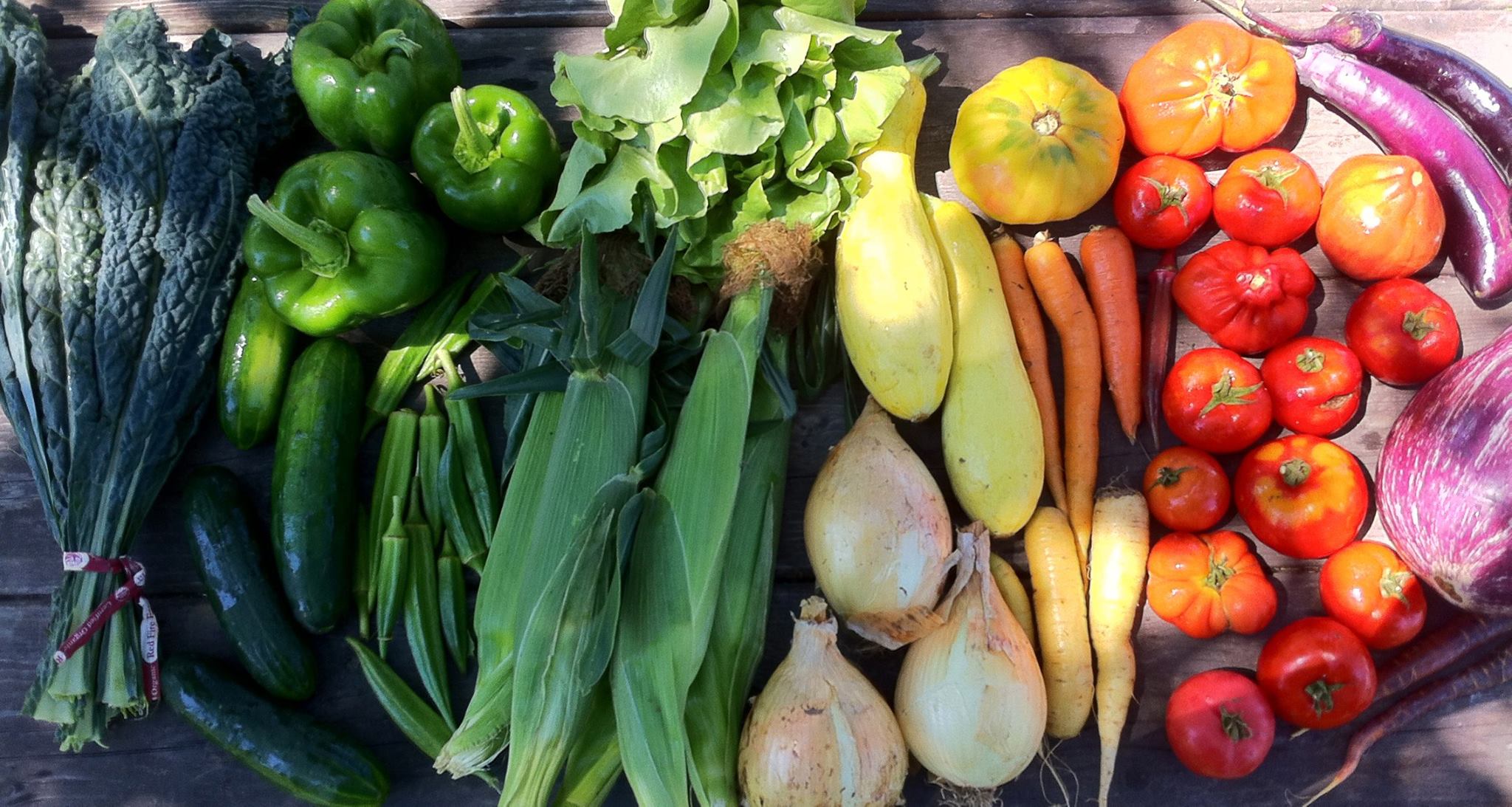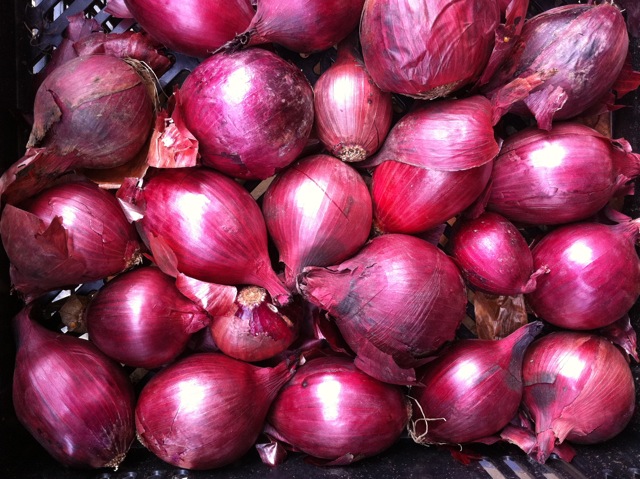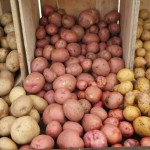
Potatoes
The Basics
We have many colors and types of potatoes over the season. In the summer, we sell new, young potatoes with thin skins that should be used within a few weeks.
Our storage potatoes include fingerling varieties, blue, yellow, red, and white types.
Cooking Tips
Different types of potatoes are suited for different uses depending on their starch content.
High-starch potatoes such as Russets are excellent for frying or baking whole.
Medium-starch potatoes including yellow Yukon varieties, Red Chieftain, or Salem whites, are general all-purpose potatoes that can be boiled, mashed, roasted, or hold their shape in salads.
Fingerling potatoes are best used roasted or in salads.
Storage Tips
Store potatoes in a cool, well-ventilated area that does not get below 50 degrees. Make sure that they are kept dark, or they will begin to sprout much sooner and develop a green skin. A paper bag is a great way to keep potatoes protected from light. If your potatoes do begin to sprout or turn green, just dig out the sprouting eyes and discard them, and trim off any green discoloration.

Popcorn
The Basics
Our organic popcorn has great flavor and texture. We harvest the cobs in late summer and let them dry naturally in our greenhouses. We sell some popcorn on the cob, and also jars of kernels.
Cooking Tips
To pop popcorn on the stovetop, rub the kernels off the cob and into a bowl. Heat a tablespoon or so of high-temperature oil, like canola, coconut or corn oil, on high in the bottom of a saucepan. Put in your kernels and cover: usually a layer of kernels on the bottom of the pan is a good amount per batch It’s okay if a little chaff gets in too. When they start to pop, start shaking the pan a bit on the heat to keep popped kernels from burning on the bottom. When popping slows, remove the pan from heat and transfer popcorn to a big bowl or paper bag.
To pop in a microwave, place the cob in a lunch-sized paper bag and heat for approx. 2 1/2 minutes or until popping slows. It’s better to err on the side of underdone rather than burnt!
We like a dash of olive oil, and then nutritional yeast (in place of Parmesan cheese), salt and pepper.
Curry powder, salt and dried dill is also great. Maple syrup, salt and sunflower seeds is yummy too.
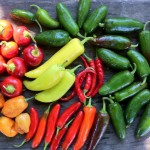
Hot Peppers
The Basics
We grow many varieties, from Habanero to Jalapeno to the milder Hungarian Hot Wax and Poblanos. We offer dried peppers in the fall and winter.
Cooking Tips
Hot peppers can be used green or red. Add some to anything you’re cooking for flavor and heat. When cutting up hot peppers it’s a good idea to wear rubber gloves if you have them to protect from the heat.
To cut their heat, you can roast them in the oven, seeded and halved, and then fill the halves with lots of cream cheese or mild goat cheese and stick ’em back in the oven to broil until the cheese gets golden on top.
You can freeze hot peppers easily for use later whenever spicy flavor is needed – just remove stems and seeds and freeze raw in a bag.
Members can come to the farm to pick their own hot peppers for hot sauces, salsas, freezing, or drying.
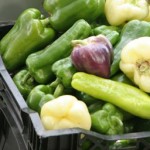
Peppers
The Basics
We grow a wide variety of peppers, from long sweet Italian frying types to the classic chunky bells. Did you know that green peppers are a less ripe version of a red or yellow pepper? If you let a green pepper stay on the plant, it will ripen further into a colorful pepper. We have peppers that ripen into varied hues from yellow to orange to red, even chocolate brown. We also have some peppers that are white or purple at their “green” stage.
Storage Tips
Wrap loosely in the fridge. Try to keep them dry, as moisture will cause them to rot sooner. Green peppers will last a few days longer than yellow or red.
Peppers are the easiest thing to freeze, just chop them up and put in a bag and freeze. Then you can take them out and throw them in anything all winter. You can also roast them. Same deal for hot peppers as for sweet.
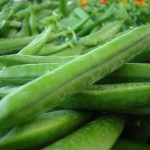
Peas
The Basics
We grow several types of spring peas: shelling, sugar snap, and snow peas.
Snow pea pods are very flat, with extremely small peas inside. Eat the whole pod!
Sugar snap pea pods have large peas inside, with a thick, crunchy pod. These pods are also delicious whole.
Shelling peas have a thick, inedible pod with very large peas inside. Remove the peas from the pod, discard the pod, and dry or cook the peas immediately.
In the early spring, we also sell pea tendrils (the baby pea plants before they produce any pods). These are an extremely tasty delicacy– you can nibble on them raw or do a quick saute.
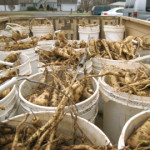
Parsnips
The Basics
If you’ve never had these, get excited. They are sweet and so yummy — sweeter and nuttier than carrots. The first round of parsnips are harvested in the fall, but we save some in the ground over winter. These parsnips are dug in the spring and have an even higher sugar content. The cold of winter makes the parsnips convert some of their starches into sugars, making them even more delicious.
In medieval times, parsnips were as much of a staple as potatoes. Sugary varieties were also often fermented to make wine. High in potassium and vitamin C.
Cooking Tips
Try mashed parsnips with a little honey, roasting them with other root veggies, making parsnip “fries,” or replacing carrots for parsnips in any of your other recipes. Parsnips are a great replacement for carrots in carrot cake!
Storage Tips
They store much like carrots in cool and humid places. For short-term storage, keep bagged in the refrigerator for up to a few weeks.
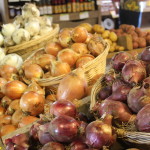
Onions
The Basics
We grow several types of onions, including pearl onions, Ailsa Craig sweet onions, and storage types.
Pearl onions appear first in the springtime. Use anywhere you’d use regular onions. They have a slightly milder flavor that’s great for sandwiches and salads. And you can use the green tops like scallions! Just chop them up and saute them a couple minutes with whatever you’re cooking. Roasting them whole is delicious.
Ailsa Craigs have the characteristics of a sweet, Spanish-type onion. Ailsa Craig onions take their name from an island off the coast of Scotland. They do well in our cool New England weather. They’re sweet and not for storing long-term. Delicious raw on tomato sandwiches, added to salads, and caramelized. The greens are a little tougher than the pearl onion greens, and more suited to flavoring soups and stocks. You could try them in a saute too and see how they cook up.
Our storage onions, red and yellow, are harvested in early fall and dried out in our greenhouses.
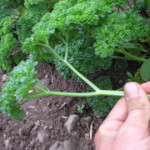
Parsley
The Basics
We grow two types of parsley. Italian flat leaf parsley has a slightly stronger flavor and flat leaves, a favorite of chefs. Curly parsley is perhaps the more well known variety with big poofy leaves that keep a nice loft when chopped. Both are great for any recipe that requires parsley. Fresh herbs can make your sandwiches more delicious too, so don’t be afraid to add a few leaves of parsley.
Storage Tips
Keep in the refrigerator in a plastic bag. For longer keeping, put stems in a cup of water and cover with a plastic bag.
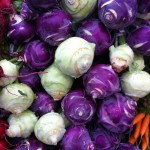
Kohlrabi
The Basics
We grow kohlrabi during a large part of the year. Younger kohlrabi in the springtime is smaller, sweeter, and comes with the greens attached. Kohlrabi that we harvest in the fall and store overwinter is larger and firmer.
Cooking Tips
This crazy looking vegetable comes in both purple and green, but there are no discernible differences in flavor. Peel and slice up the bulb thin and raw for salads. You can cook the bulb too in a stirfry, soup, or any style you like. Make sure to remove the woody skin before preparing.
If the leaves are attached, you can use them similarly to kale.
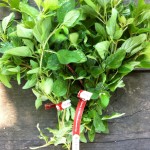
Oregano
The Basics
Oregano is a member of the mint family, and shares some similar flavor characteristics with mints and other relatives like basil, lavender, marjoram, and sage. The taste profile of oregano includes sweet and bitter notes with a deep warming aromatic flavor. Oregano also has numerous health benefits, specifically for its antibacterial and antioxidant properties, so love it up and use it often!
Cooking Tips
Oregano pairs well with beans, eggplant, and tomatoes. Try it in salad dressings or marinades with lemon and garlic, in any type of tomato sauce, or as a flavoring for beans.




